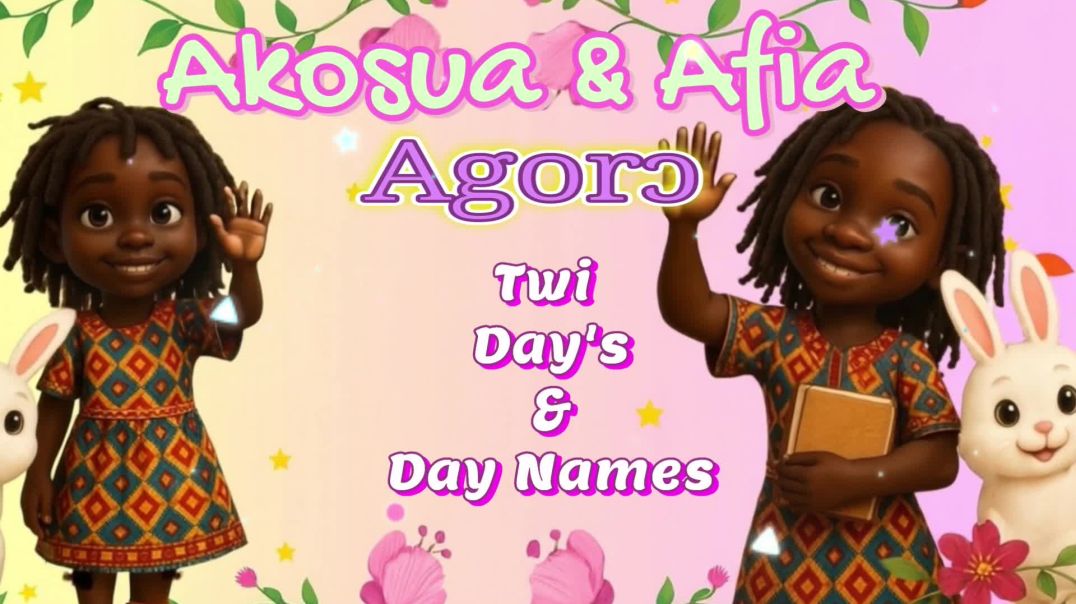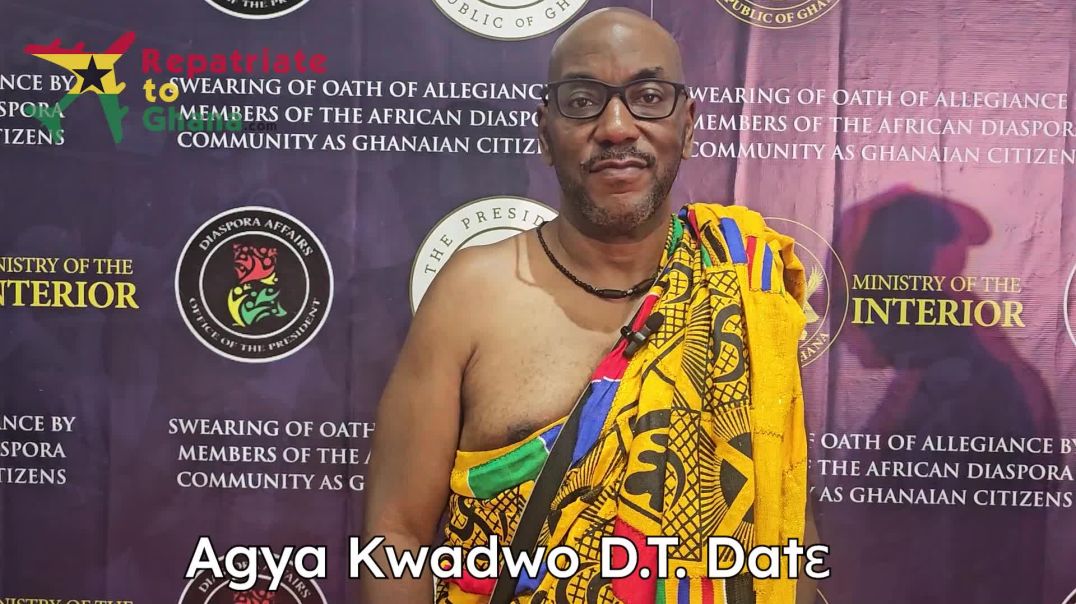Top videos
Akosua & Afia - Agorɔ - Days and Day Names
Agyei delivers a very important message to members of the Black community who are between 45-60 years old!
👍MORE ABOUT AGYEI TYEHIMBA:
https://linktr.ee/agyeityehimba
👍SUBSCRIBE TO THIS CHANNEL: https://www.youtube.com/channe....l/UCyvAXQmlCOfFcIWWK
👍Watch our most popular video, "The Fascinating Story of Khalid Muhammad! https://www.youtube.com/watch?v=00wRvjdnlaE&list=PLWQGEqGd_nBOoESO3Fr4465BA0jbcjtUc&index=8
______________________________________
👍POLITICAL EDUCATION PLAYLIST:
https://www.youtube.com/watch?v=IwyvhUuUi_U&list=PLWQGEqGd_nBNU4D4iZSdcHZncf7up70mr
👍INTERVIEWS PLAYLIST:
https://www.youtube.com/watch?v=w_swbIy8hEU&list=PLWQGEqGd_nBPfKOXMWdVljXVI78ysYxep
👍COMMENTARY PLAYLIST:
https://www.youtube.com/watch?v=wVftvM6PPWc&list=PLWQGEqGd_nBO4se3qoWUjqpk6diX57lIq
___________________________________________
Provided to YouTube by Virgin Music Group
Black Man Black Man · Mutabaruka
Black Attack
℗ 2023 Shanachie Ent. Corp.
Released on: 2023-10-06
Writer: Allan Hope
Writer: Neil Fraser
Auto-generated by YouTube.
Provided to YouTube by DistroKid
Her Real Name is Ayiti, Not Haiti (Black & Red Flag) (Empire of Ayiti Covert 19) · Ayiti Bluez
Her Real Name is Ayiti, Not Haiti (Black & Red Flag) (Empire of Ayiti Covert 19)
℗ 2698899 Records DK
Released on: 2021-06-25
Auto-generated by YouTube.
tells an amazing scholarly detective story that searches for -and finds- meaningful links between African Americans and their ancestral past. It bridges hundreds of years and thousands of miles from the Gullah people of present-day Georgia back to 18th century Sierra Leone. It recounts the even more remarkable saga of how African Americans have retained links with their African past through the horrors of the middle passage, slavery and segregation. The film dramatically demonstrates the contribution of contemporary scholarship to restoring what narrator Vertamae Grosvenor calls the "non-history" imposed on African Americans: "This is a story of memory, how the memory of a family was pieced together through a song with legendary powers to connect those who sang it with their roots."
THE IMPERISHABLE BEAUTY OF ASSATA SHAKUR!
Written May 2013, in the wake of the addition of Mama Assata Shakur's to the FBI's Most Wanted Terrorist List. As our Mama has now joined the Ancestors, we share this tribute to her life & legacy.
MOJUBAAAAA MAMA ASSATA SHAKUR!
#assatashakur #freeemall #politicalprisoners
support KIMBUNGA MEDIA: https://www.patreon.com/kimbungamedia
Join WhatsApp: https://whatsapp.com/channel/0....029VaXt3adHwXb8Yt44J
Join Telegram: https://t.me/kimbungamedia
• SUBSCRIBE • LIKE • COMMENT • SHARE
••••••••••••••••••••••••••••••••••••••••••••••••••
Greetings & Welcome to Kimbunga Media - Your Premiere Universal Afrikan Nationalist Media Institution
Find Kimbunga Medai on:
► Instagram: http://instagram.com/kimbungamedia
► https://www.facebook.com/kimbungamedia
► Twitter: https://twitter.com/kimbungamedia
► SignUp for Newsletter: https://kimbungamedia.com/
Nana Ampomah Kwakye, Chief of Kwahu Kotoso Akwamu, Shares His Experience with Kantanka Vehicle
In an exclusive conversation with Kwadwo Safo Studios, Nana Ampomah Kwakye, a respected chief of Kwahu Kotoso Akwamu, shared his excitement and experience after purchasing a Kantanka K71 PRO.
According to him, the reaction from the public has been overwhelming. “Each time I drive the car to work, people cheer me on,” he said. “They’re simply happy to see a Kantanka vehicle on the road.”
He recounted the first day he drove the K71 PRO to work and parked it in an unusual spot. To his surprise, a crowd gathered around the car, curious and amazed that such a stylish and high-quality vehicle was built right here in Ghana.
Nana Ampomah also highlighted some of his favorite features of the car. These included the reverse detector, the ability to connect the car’s screen to a mobile phone, and the fact that it is a brand-new, modern vehicle with impressive functionality.
He concluded by stressing the importance of national support, urging government, traditional leaders, and the Ghanaian public to rally behind Kantanka, emphasizing that “Kantanka carries greatness, and deserves our full support.”
In a powerful and unexpected move, Aliko Dangote, the billionaire industrialist, has publicly joined Captain Ibrahim Traoré’s vision for a borderless Africa — a united continent free from colonial barriers, where Africans can move, trade, and build together without visas.
In this emotional viral video, witness how Dangote’s explosive message shook African leaders and inspired millions of youth across the continent.
From Lagos to Ouagadougou, from Johannesburg to Nairobi — the call is one:
👉 Tear down the borders!
👉 Unite under one flag!
👉 Africa for Africans!
This is not just business — it’s a revolution of hearts, minds, and courage.
🔥 The Pan-African renaissance is unstoppable.
💪 Traoré lit the flame. Dangote just poured fuel on it.
📢 Watch till the end for Dangote’s shocking words that left African presidents speechless!
#africaunite #traoré #dangote #PanAfricanRevolution
#Love
#Peace
#africansolutions
Agya Kwadwo Datɛ Ghana Citizenship Success Story










